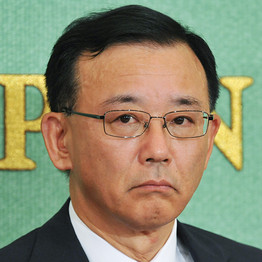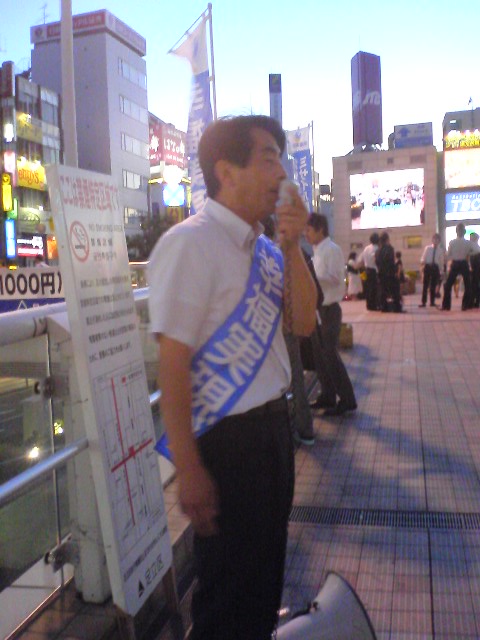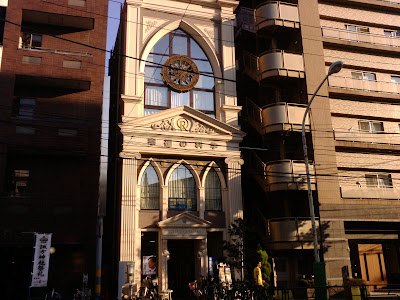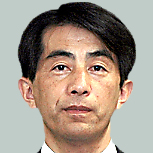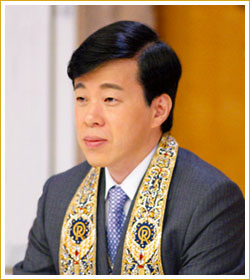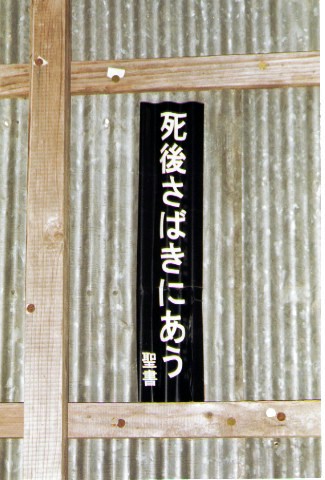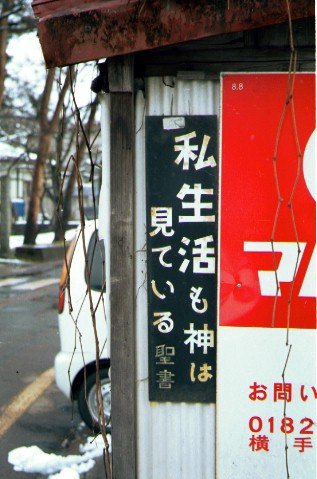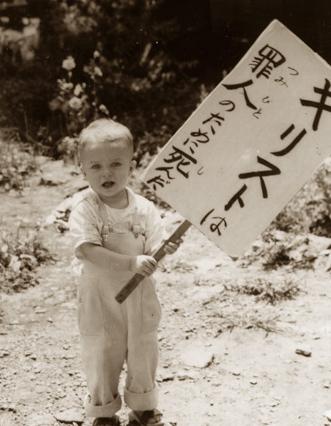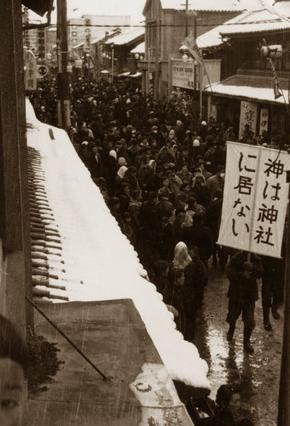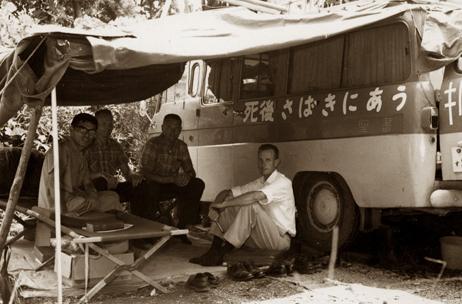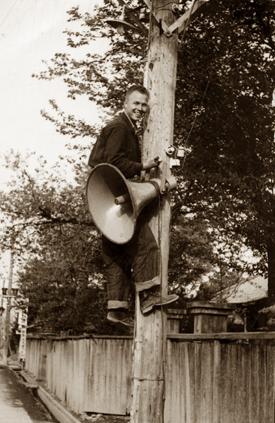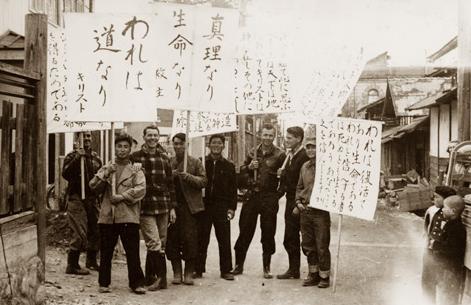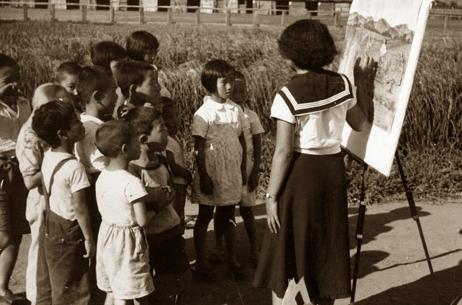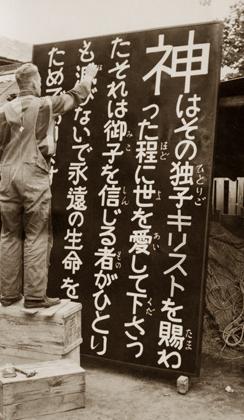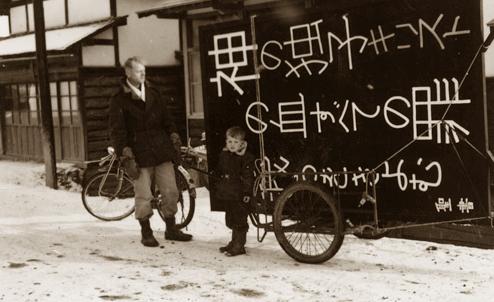(Anyone who enjoyed this post would probably be interested in my 2008 piece about ties between historical revisionary conservatives and Japan’s current Prime Minister, Shinzo Abe.)
The baby-faced alt-right provocateur Milo Yiannopoulos lost his speaking gig at this week’s CPAC (Conservative Political Action Conference, essentially a conference of the American Republican party) for being increasingly gross, but we aren’t here to talk about this boring child.
Instead, We’re here to talk about the man who replaced Milo on CPAC’s schedule, Jikido “Jay” Aeba (饗庭直道、あえば直道), a former high-level member of the extremely wacky right-wing Japanese cult religion Happy Science, who went on to found their subsidiary political party, the Happiness Realization Party, and is now working to develop a career as a kind of self-appointed ambassador between the Japanese and American right, as part of the substantial Japanese right-wing media industry. There’s a lot of threads to follow, so I’m just going to give a brief overview here and then follow up with additional posts in the near (ish) future. Let us also note that his Twitter handle, @ultraJedi, is pretty sweet.
This week will be Aeba’s second appearance at CPAC, following his 2016 speech, below, where he was hailed as the co-founder of the Japanese Conservative Union (JCA), an organization which ostensibly aspires to be a clone of the successful American Conservative Union (take note of how Aeba took the URL conservative.or.jp, in transparent imitation of the ACU’s conservative.org), but in reality gives all indication of being little more than a fancy website to give his one-man operation a veneer of institutional legitimacy. Neither the English or Japanese version of his profile on the JCU website mention his history with Happy Science or the Happiness Realization party, which makes his resume look oddly thin.
Aeba’s earlier CPAC speech is a pretty bland collection of right-wing talking points common to both countries, with a hefty infusion of pandering to his audience.
The video, posted by the ACU but possibly produced by Aeba / JCU, begins with a clip from Reagan’s speech before the Japanese Diet on November 11, 1983, in which he affirms that America and Japan “are united in the belief that freedom means dedication to the dignity, rights, and equality of man”, which is given the caption “for the conservative partnership between US and Japan…” This is followed up by a triumphant little montage in which Aeba meets a series of American conservatives including Grover Norquist, Ben Carson, and ACU Chairman Matt Schlapp, who wants to tell him “how honored we are that you come to see us. That you want to collaborate and partner with us”, which is certainly true. The CPAC crowd is fairly sedate, but he gets a few moderate to strong applause lines when he generically praises conservatism, the America – Japan alliance, accuses China of planning to steal Hawaii and Okinawa, and that he arranged for the Japanese translation of Clinton Cash to be published, and gets a laugh when he accuses the American and Japanese Democratic Parties that both took power in 2009 of being “socialistic”, and calls the promise of entitlements “free stuff”. But he also gets very little reaction to parts of his speech that he clearly cares greatly about, in particular the controversy over American military bases in Japan.
In fact, although this was Aeba’s first speech at CPAC, it was not his first time in attendance. The Atlantic Magazine published an article about Aeba’s early attempts to schmooze with the CPAC crowd, back in 2012. (And good for The Atlantic for providing what seems to be pretty much the only English language coverage of Aeba prior to this post I’m writing.)
Early one Saturday in February, as the conference entered its third and final day, the three men sat down in the Marriott’s dimly lit bar to compare notes on what they had seen so far. Behind them, a man dressed in full Founding Fathers drag, complete with wig and tricorne, strolled past; at an adjacent table, two young men with CPAC badges were loudly comparing their hangovers. […]
Aeba, one of the leaders of Japan’s right-wing Happiness Realization Party, was accompanied by Yuya Watase, the founder of the Tokyo Tea Party; their interpreter, a Happiness Realization Party official named Yuki Oikawa; and Bob Sparks, their American political consultant. Together, they said, they were on a mission to export American-style conservatism—the gospel of small government, low taxes, and free enterprise—to the Land of the Rising Sun.
[…] If they had gathered nothing else from CPAC, the Japanese conservatives had clearly internalized the American right’s language of alarmism and crisis.
Aeba clearly kept up his connections with the CPAC crowd, and as mentioned above, took inspiration from them in creating his (The “Japan Tea Party” didn’t go anywhere, but Watase Yuya is still active. I’ll take a look at him in some future post.)
But what was that about a strange religious cult and the political party that they sponsor? Oh right, Happy Science, and the Happiness Realization party.
Happy Science (in Japanese: 幸福の科学 / koufuku no kagaku) is a Japanese “new religion”, that was founded by Ryuho Okawa in 1986 and has gone onto be one of the most successful of these eccentric cults. The theology itself seems to be a melange of traditional Buddhist cosmology with a wide assortment of generic new-age pablum, topped with a very strong layer of veneration of the “Master Okawa”. I don’t want to get into their highly entertaining cosmology in this post, except to say that reading a Happy Science-published book on the subject several years ago made me wonder if I was reading a Japanese translation of the Dungeons and Dragons Manual of the Planes.
To get a taste of their style, as well as the eclectic basket of influences they draw upon, here are a couple of brief excerpts from their official website:
El Cantare is the Lord, Buddha and Savior. He is the supreme God of the terrestrial spirit group who has the highest authority over the planet Earth and is directly connected to the Primordial Buddha or Primordial God – the Creator of the whole universe.
Lord El Cantare has also sent down parts of his own consciousness – brother souls – to guide humanity in the right direction at the most important times in history. El Cantare’s brother souls who have been born to Earth in the last twenty thousand years are:
La Mu – 17,000 years ago on the Mu continent
- Thoth – 12,000 years ago in Atlantis
- Rient Arl Croud – 7,000 years ago in the Incan Empire
- Ophealis – 6,500 years ago in Greece
- Hermes – 4,300 years ago in Greece, Crete Island
- Gautama Siddhartha (Shakyamuni Buddha) – 2,500 years ago in India.
- Ryuho Okawa – present reincarnation of El Cantare
Needless to say, that last line about the cult’s leader being a reincarnation of the creator of the universe is the most significant teaching in the entire religion, and the core of the entire enterprise. Although they claim that “The grand mission of Happy Science is to create utopia – a world filled with love, peace, harmony and prosperity”, Okawa from the beginning combined his religious teachings with a hard-right political ideology. I found a 1991 AP story, that describes him as follows:
Lights go off. White smoke rises on stage. A round-faced, chubby man in a dark business suit appears in a spotlight before thousands of admirers. He claims he is Japan’s Messiah, the reincarnation of Buddha.
The man portrays the Japanese as a chosen people destined to destroy the United States and the Soviet Union and make China “a slave.”
[…] In his book “Nostradamus: Fearful Prophecies,” Okawa asserts that only the Japanese Leviathan will survive the imminent end of the world after destroying the United States and the Soviet Union:
“In the 21st Century, there will be no enemies for Leviathan. It will slash throats of the old eagle and the exhausted red bear, and laugh at the aging Europe. It will use China as a slave and Korea as a prostitute.”
The same article briefly describes his business model, which may sound familiar to readers who have read about Scientology.
Annual revenues are about $45 million, most of it from donations,
according to Teikoku Data Bank, an independent research company.
Group spokesmen admit that up to 90% of their members do nothing more than subscribe to a monthly magazine, “Science of Happiness,” for $100 a year. But they say as many as 200,000 people have become “true members.” Critics put that number as low as 20,000.
To become a true member, one has to read 10 of Okawa’s books and pass exams on them.
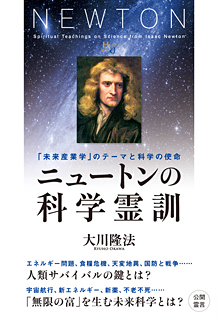 You may have noticed mention above of a book entitled “Nostradamus: Fearful Prophecies,” which is strongly representative of Okawa’s prodigious output. Of the astonishing 714 titles currently credit to him on the Happy Science online bookstore, a large proportion consist of alleged posthumous interviews with the souls of deceased figures such as Martin Luther King Jr., Adolf Hitler, Walt Disney, Albert Einstein, Nelson Mandela, Zhou Enlai, Isaac Newton, Georg Hegel, Oda Nobunaga, Sakamoto Ryoma, and many dozens if not hundreds more1. He also publishes what he claims are interviews with the “guardian spirits” of living celebrities, such as this book in which he discusses the secret of beauty with the guardian spirits of Natalie Portman and Keira Knightley, or this interview in which the guardian spirits of the famous AKB48 girl-pop group explain the secrets of marketing.
You may have noticed mention above of a book entitled “Nostradamus: Fearful Prophecies,” which is strongly representative of Okawa’s prodigious output. Of the astonishing 714 titles currently credit to him on the Happy Science online bookstore, a large proportion consist of alleged posthumous interviews with the souls of deceased figures such as Martin Luther King Jr., Adolf Hitler, Walt Disney, Albert Einstein, Nelson Mandela, Zhou Enlai, Isaac Newton, Georg Hegel, Oda Nobunaga, Sakamoto Ryoma, and many dozens if not hundreds more1. He also publishes what he claims are interviews with the “guardian spirits” of living celebrities, such as this book in which he discusses the secret of beauty with the guardian spirits of Natalie Portman and Keira Knightley, or this interview in which the guardian spirits of the famous AKB48 girl-pop group explain the secrets of marketing.
Happy Science has been in the Japanese news quite a lot recently, due to the decision of young actress Fumiko Shimizu to retire from showbiz entirely and devote herself fulltime to the cult, under the priestly name of Yoko Sengen. Shimizu had allegedly been a member of Happy Science since childhood, and seems to have embraced it fully as a means to escape from a career that she seems not to have enjoyed very much.
The Happiness Realization Party is also not new, and was first discussed on this blog back in 2009, when Adam wrote a series of posts about the candidates running for a seat in the Diet’s lower house, representing his district in Tokyo. The party had only been founded that year, and the candidate Adam wrote about, Kazumasa Fujiyama, only won about 1% of the vote. In the May, 2010 election, the HRP won their first Diet seat when Yasuhiro Oe, who had been elected as a proportional member representing the Japan Renaissance Party, decided to change his affiliation to HRP post-election. As my co-blogger Adam explained back in 2010:
The Wakayama native [Yasuhiro Oe] first became an upper house member in 2001 as a PR candidate on the LDP ticket, then as a DPJ candidate in 2007. He later joined JRP as a founding member in 2008, citing problems with the DPJ’s methods. In terms of policy, he has adopted some typical right-wing positions – he’s pro-Taiwan, a firm Nanjing Massacre truther, and a vocal supporter of the victims of North Korea’s kidnapping program. He comes up for reelection in 2013.

As mentioned above, Jikido Aeba was the original leader of the HRP when it was founded on May 23, 2009, and he boasted that he “Wanted to lead as the Barack Obama of Japan.” Instead, he handed over the position to Kyoko Okawa, wife of the cult leader and “reborn Aphrodite and bodhisattva of wisdom and intellect”, who he later divorced in 2011, after their candidate list was finalized on June 4 for the election mentioned above, in which they won no seats at all.
The platform of the Happiness Realization Party includes many elements of mainstream Japanese conservatism that overlap with the ruling (conservative) Liberal Democratic Party, as well as some elements that diverge sharply from any mainstream party. To quote from Adam’s 2009 post:
Among their chief policy proposals:
- Revise the constitution to allow a pre-emptive strike on North Korea if necessary.
- Eliminate inheritance taxes and consumption taxes.
- In the cities, “bring work and home closer together” by building offices and residences in the same building.
- Build an enormous monorail around the entire city of Tokyo.
- Allow massive immigration and promote reproduction to increase Japan’s population to 300 million by 2050
Some of their most radical proposals can be found in their draft constitution:
- Make a directly elected president the head of state. The president would have the right to issue presidential orders apart from parliamentary legislation. If an order and legislation contradict each other, the chief justice of the supreme court would decide which to follow. But if there is no decision in two weeks, the presidential order will take precedence.
- The emperor “and other traditions” would be kept on but with their power limited by law.
- The chief justice of the supreme court would be directly elected.
- Payment for public bureaucrats would be based on performance (this would be in their constitution!)
- “Equal opportunity” and total freedom within the law.
- The state must always aim to have a small government with low taxes.
- “The mass media must not abuse their power and must act responsibly to the people.”
So, back to Aeba.
He remained involved in Happy Science and the Happiness Realization Party, holding positions such as HPR Director of Public Relations (2011) and Director of Investigations (2013), until he resigned in 2015 to start the Japan Conservative Union. During the last few years of his tenure in the HRP he seems to have been laying the groundwork for this transition, not only with schmoozing such as the 2012 CPAC visit mentioned above, but publishing a small selection of books tactically chosen to bolster his credentials to conservatives in both Japan and America as a conduit to the other country.
It is vital here to make note of his co-founder in the JCU, Shun Eguchi, who spent his career in the Sankei Shimbun, Japan’s conservative, business focused newspaper that can be thought of as similar to the Wall Street Journal, and he ended his career as president of their more specifically business-focused publication, Fuji-Sankei Business Eye. Eguchi is also a graduate of Takushoku University, considered to be a hard-right institution, with ties to many figures known for conservative revisionist historical views.
In 2011 he published the book The Strongest Country – Japan’s Decision, and the from the book’s official description on Amazon it sounds like some pretty generic conservative pablum about strengthening national defense and the economy, mixed with criticism of welfare states such as Sweden.

More recently, he published The Trump Revolution, which came out in March of last year, and supervised the Japanese translation of the infamous Clinton Cash, which was produced by an organization run by Trump’s Leninist fascist political advisor Steve Bannon.
He has also supervised a fairly weird looking pro-Trump book called Presidential Feng-shui, co-authored by a wacky Feng-shui huckster by the name of Dr. Copa ((His real name is Kobayashi Yoshiaki, and the book was co-written with his son, Kobayashi Teruhiro)). In this book, Dr. Copa explains how Trump (perhaps inadvertently, I’m only reading so much of this nonsense) used the power of feng-shui to win himself the White House, in particular via the magico-spatial relationship between the White House and the location of the Trump hotel in Washington’s Old Post Office Building. The  magazine Weekly Shincho reported that Dr. Copa is such a big fan of Trump that he was a paying audience member at Trump’s inauguration, so that he could be closer to his “research subject”. And, unsurprisingly, it was Aeba – who was also in attendance at the inauguration and “Liberty Ball”, according to his persona blog, who served as the intermediary to obtain the tickets. In an interview with Shincho, Dr. Copa briefly explains his theory of how Trump used the architectural feng-shui power of the Old Post Office in an identical way to how the location of Toyotomi Hideyoshi‘s camp relative to Kiyosu Castle allowed him to achieve a surprise victory at the 1582 conference at that castle that contributed to his consolidation of power.
magazine Weekly Shincho reported that Dr. Copa is such a big fan of Trump that he was a paying audience member at Trump’s inauguration, so that he could be closer to his “research subject”. And, unsurprisingly, it was Aeba – who was also in attendance at the inauguration and “Liberty Ball”, according to his persona blog, who served as the intermediary to obtain the tickets. In an interview with Shincho, Dr. Copa briefly explains his theory of how Trump used the architectural feng-shui power of the Old Post Office in an identical way to how the location of Toyotomi Hideyoshi‘s camp relative to Kiyosu Castle allowed him to achieve a surprise victory at the 1582 conference at that castle that contributed to his consolidation of power.
On a brief search I don’t see any direct connection between Dr. Copa and Happy Science, but it is hardly surprising that a (former?) member of a weird science-fiction inflected cult is also interested in pop-parapsychology.
The Shincho article on Dr. Copa mentioned as an aside that Aeba had described himself as an “Advisor” to the American Republican party, but that there was no evidence of this. Buzzfeed Japan has an article on this exact topic from November of last year. In this piece they list his repeated claims, both online and in media appearances in Japan, that he is an official advisor to the GOP. They describe how, in addition to doing online research, they had their colleagues at Buzzfeed America do some investigation. It turns out that nobody at the Republican National Committee (RNC) knows who Aeba is, but Buzzfeed Japan emails Aeba to ask for clarification.
As evidence of his claim, Aeba forwards them an English language email from Bob Sparks, the American political consultant who worked as a fixer during the 2012 CPAC visit reported by The Atlantic. According to Sparks, Aeba was an “unpaid advisor to Sharon Day“, who is currently the co-chair of the RNC, but Day did not respond to queries and no additional proof was offered. Their seemingly correct conclusion is that while Aeba may have been informally told by Day herself that he was her advisor on US-Japan relations, but that he never had any official position with the RNC or any affiliated organizations. However, he continues to proudly misrepresent himself
As I mentioned earlier, despite having a genuinely substantial political career with the Happiness Realization party, Aeba makes absolutely no mention of them or Happy Science on the Japan Conservative Union website, despite describing himself prominently as an advisor to the GOP. (Although his personal blog, which goes all the way back to 2009 when the HRP was founded and is still updated regarding his current activities, so at best he has made a half-hearted attempt to truly hide his past.)
In that same article, Buzzfeed noticed that he had likewise never made note of his former HRP affiliation on any of his recent media appearances, and none of his hosts organizations or publishers had identified him as such, and so they asked Asahi Broadcasting, Fuji Television, Futaba Publishing, and Sankei Shimbun for comment.
Only Futaba, the publisher of his 2016 book The Trump Revolution, replied, saying that they had avoided mention of his ties to Happy Science in consideration of his telling them that, his “relationship with the Happiness Realization Party is not good.” Does this mean that the HRP is angry at him for cutting ties with them and starting his own personal brand, or is he simply making an excuse?
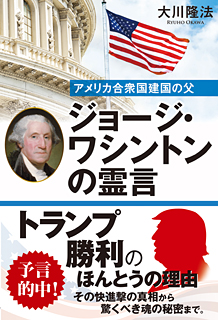 It is unclear to me whether Aeba retains any ties with Happy Science, but it is clear that his goals align with theirs. In October of last year, Ryuho Okawa published yet another of his spirit interview books, in which he “interviewed” the ghost of George Washington and the guardian spirit of Donald J. Trump, and explained that Trump is in fact the reincarnated spirit of America’s first president. “If candidate Trump becomes President, 300 years of future prosperity are promised for both Japan and America, but if it is Hillary, then America will lose its leadership role in the world.” The sequel, containing more interviews with Trump’s guardian spirit is already out, and new-age spiritual mumbo-jumbo aside, I suspect one would be hard pressed to tell the content apart from any of the speakers at CPAC.
It is unclear to me whether Aeba retains any ties with Happy Science, but it is clear that his goals align with theirs. In October of last year, Ryuho Okawa published yet another of his spirit interview books, in which he “interviewed” the ghost of George Washington and the guardian spirit of Donald J. Trump, and explained that Trump is in fact the reincarnated spirit of America’s first president. “If candidate Trump becomes President, 300 years of future prosperity are promised for both Japan and America, but if it is Hillary, then America will lose its leadership role in the world.” The sequel, containing more interviews with Trump’s guardian spirit is already out, and new-age spiritual mumbo-jumbo aside, I suspect one would be hard pressed to tell the content apart from any of the speakers at CPAC.
Hopefully Aeba’s new speech will be up soon so I can see how it fits in with everything else, and I will find time in the near future for more writing on related topics.
- One that stood out to me on a quick skim as particularly offensive was his book of “spiritual testimony” from the great manga creator Mizuki Shigeru, claiming to have been recorded on the 12th day after his death in late 2015. [↩]

 El Cantare is the Lord, Buddha and Savior. He is the supreme God of the terrestrial spirit group who has the highest authority over the planet Earth and is directly connected to the Primordial Buddha or Primordial God – the Creator of the whole universe.
El Cantare is the Lord, Buddha and Savior. He is the supreme God of the terrestrial spirit group who has the highest authority over the planet Earth and is directly connected to the Primordial Buddha or Primordial God – the Creator of the whole universe. La Mu – 17,000 years ago on the Mu continent
La Mu – 17,000 years ago on the Mu continent according to Teikoku Data Bank, an independent research company.
according to Teikoku Data Bank, an independent research company.